Strawberries, Plot 1 and 4.
June was a fairly dry month with only a couple of days of decent heavy rain, so it’s been a month of using the watering can. It takes about an hour to water all four plots, so on the plus side it’s been great exercise! Temperatures were roughly in line with the seasonal average for June, although there was a mini heatwave at the end of June/beginning of July. Thankfully those strong winds finally died down.
We’re now well into the growing season, and we’ve got quite a lot on the go, some harvesting, some planting and a lot of nurturing! Here’s what’s going on
Garlic
Garlic, Plot 2 and the Orchard plot.
The rust on the garlic continued to be a problem and the plants started to turn yellow, so we decided to dig them up in mid-June. We were pleasantly surprised with the size of the bulbs, they had filled out nicely. We planted the cloves 2 inches deep this season and it seems to have paid off, it’s definitely the best crop of garlic we’ve harvested so far.
Drying out the garlic in my potting room at home
Peas: Champion of England
Champion of England pea plants, plot 1
The Champion of England pea plants certainly lived up to their name this year. They were magnificent. They grew really tall and produced a bountiful supply of peas, most of which have been frozen, apart from the odd allotment snack along the way..
Harvested Champion of England peas.
We started harvesting peas around June 20th, and we harvested the last of the peas and removed the plants on July 9th. The plants had toppled over and had started to turn yellow. Whilst that wasn’t a terribly long cropping period, we definitely had a great yield of peas this year. We removed the plants because we want to make way for other crops that we need to plant. Experimental crop 2, the runner bean Greek Gigante will be planted shortly.
Peas: Petit De Provence
Petit De Provence peas, Orchard plot
I rather love peas so when I saw some Eden Project peas seeds at the local garden centre how could I resist?! These pea plants produce ‘petit pois’ and the peas are supposed to taste beautifully sweet. The plants only grow 40cm tall, so we’ve simply used pea sticks and some twine to help the plants climb. I’m looking forward to this allotment snack!
Sweetcorn : Swift F1
Sweetcorn, plot 2
Freshly grown sweetcorn is such a treat, so for us it’s a must have crop each year. We sow seeds in deep root trainers during April. This year we planted out the seedlings in early June, 42 plants on plot 2 and a further 18 plants on the orchard plot.
Sweetcorn is a member of the grass family so it’s thirsty, it’s also a heavy feeder. If it’s a particularly dry spell we water the plants every day. As the soil quality isn’t as good as we’d like it to be, we feed the plants with a good quality liquid organic vegetable fertilizer once a week.
This year we’re also growing a few squash plants in an around the sweetcorn bed, they are great companions.
Sweetcorn, Orchard plot.
Sweetcorn, emerging male tassel.
The male tassels are beginning to emerge. I always think the plants are a little like an expanding telescope at this stage of their growth. They are such architectural plants and planted in a large grid they look rather impressive.
Purple sprouting broccoli
Purple sprouting broccoli, plot 2
The purple sprouting broccoli has grown rather quickly, the plants are fairly big now. I worry that I haven’t spaced them sufficiently apart as their large leaves are bulging out the cage! We’ve kept the plants netted to protect them from the thuggish gangs of pigeons and crows that patrol the allotment site…. the netting has failed to keep out the cabbage white butterflies, they freely contort themselves in and out of the netting when ever they please… I will inspect the plants from hungry caterpillars!
Beetroot: Boltardy
Beetroot, plot 2
Last year we sowed packets of beetroot seeds in situ and hardly any seedlings survived the slug and snail attacks. This year we sowed the seeds in deep root trainers, grew the plants to a size that could sustain a snail attack before planting them out.
We then surrounded the plants with copious amounts of ‘Gone Slug’, an organic wool pellet, which also acts a fabulous mulch. We didn’t lose one plant to the slugs and snails and so far the plants are doing really well….
I’ve sowed another batch of seeds for planting out later in the season. I’ve found beetroot seeds don’t do well if they are sowed after July 31st, so it’s best to grow them now.
Onions: Record Rosso Tondo Tropea
Onion plants, plot 4
The onion plants are growing well, they’re about the size of a giant spring onion at the moment. They’ll need at least another month or so before they are a proper onion size.
Celeriac
Celeriac, plot 1
Celeriac takes an age to grow, it’s not one for the impatient gardener. We sowed the seeds in March, planted them out around mid- May and they won’t be ready to harvest until October at the earliest. We’ve been making sure the soil remains damp and we’ve kept the the ground around the plants weed free to help the plants establish.
I’m quite happy with the progress so far, a small root is forming….. the roots should swell from late-summer into the autumn.
Runner beans : Various varieties including, Streamline, Benchmaster, Wisley Magic, White Lady, Enorma, St George and last years saved seeds.
Runner beans, Streamline. Orchard plot
My favourite crop from last year has to be the runner bean. Strangely we’d not grown them before, and we only grew them last year by chance, when John from the real plot 2 wandered over with 14 plants. They were fairly easy to grow, despite the aphid infestation, and we got a decent harvest. I froze a good number of beans so I was enjoying that true runner bean taste well into the winter. I intend to pack the freezer full of this most delicious vegetable this year. Consequently we’ve….. or rather, I’ve gone a bit runner bean bonkers this year, we have runner bean wig-wams on all four plots.
The runner bean plants in the picture above were planted only a couple of weeks ago, they’ve rampaged up the canes. Runner bean plants are thirsty, so during dry spells they are watered daily to ensure the soil doesn’t dry out. It’s particularly important to water the plants when they start to flower, this helps the flower to set. Most varieties of runner bean are self fertile, but only a handful of varieties, which have been crossed with french beans, are self setting. We grew a self setting variety from seed called Firestorm in our first batch of runner beans plants. Sadly it was blown and battered to death during those terrible gales in May. So keeping everything crossed that the flowers set and we get plenty of beans.
Courgettes: Verde Di Milano and Verde Di Milano
Courgette, Verde Di Milano. Plot 2
We’ve planted a total of 9 courgette plants across plot 2 and plot 4. Courgette plants are fairly trouble free and easy to go, all they demand is a lot of water. They are also heavy feeders, so we feed them weekly with an organic liquid vegetable fertilizer. We’re currently harvesting around 2 to 3 courgettes a day.
We plan to sow some more seeds this month to extend the harvesting season.
Butternut Squash: Hercules, Hurricane and Hunter
I do love a butternut squash but we’ve not been that successful in growing them in previous years. So this year I’m thrilled to say they are actually doing quite well. We packed the soil they’re growing in with a lot of organic matter, we water them daily and feed them once a week with a good quality organic liquid vegetable fertilizer. It seems to be working… we have some baby squashes.
Baby butternut squashes on the Hercules butternut squash plant. Plot 2
Now to keep the pesky slugs and snails away from the tender young fruit!
Leeks: Bleu de Solaise
Bleu de Solaise seedlings, planted on Plot 4
Leeks are another crop we like to grow each year. Home grown leeks are tender and taste totally delicious. The Bleu de Solaise leek is hardy and it overwinters well. We’re planting lots of leek seedlings this year to ensure we have a plentiful supply throughout the winter months.
So far we’ve planted around 40 plants on plot 4, and we have a further 60 plants to plant out on the Orchard plot. I plan to do that next week as rain is forecast for Sunday, which will aid the planting process.
Leek seedlings, ‘topped and tailed’ to help invigorate them.
Planting the leeks, plot 4
On June 25th, we planted the first batch of leeks on plot 4. We simply use a dibber to make a deep hole, around 8 inches deep. We then place a leek seedling, that we’ve top and tailed, into the hole. We then water the seedling in, the residual soil at the side of the hole should cover the seedlings roots.
Leek seedlings, plot 4
Although only planted two weeks ago, the leek seedlings are established and beginning to grow.
Jerusalem Artichokes
Jerusalem Artichokes, orchard plot
All I can say is YAY! Don’t they look magnificent. It’s now a matter of waiting until November at the earliest…I can’t wait!
Chickpeas
Chickpeas, plot2
I have to say I absolutely love these chickpea plants, they look fabulous and they’ve been fairly low maintenance. They’ve just started to flower so let’s see if we get any pods over the couple of weeks..
And finally we’ve been harvesting some fruit….
Tayberries, plot 1. They are back, they taste amazing this year.
Cherry tree, orchard plot. Netting the tree has paid off, we have cherries!
Gooseberries, from all 4 plots.
And LOADS of strawberries….




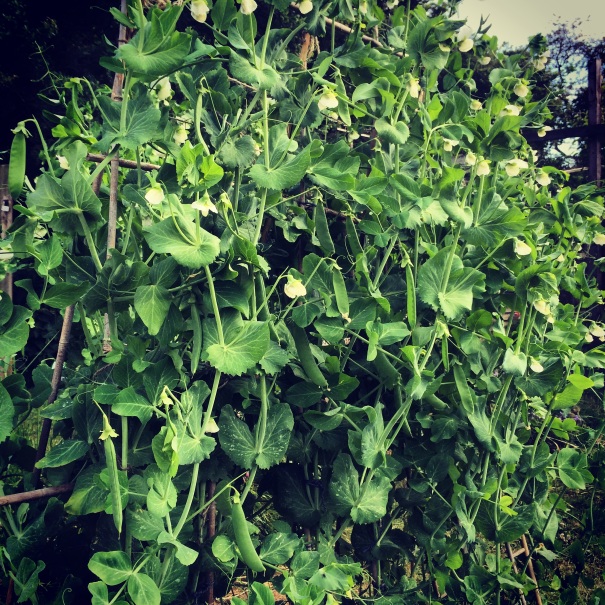



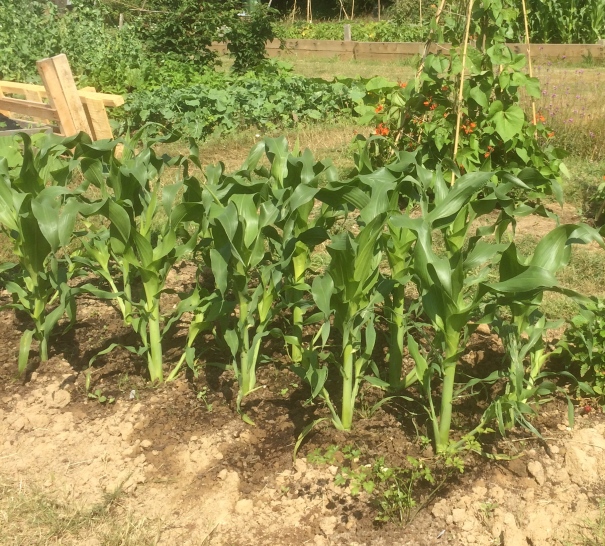


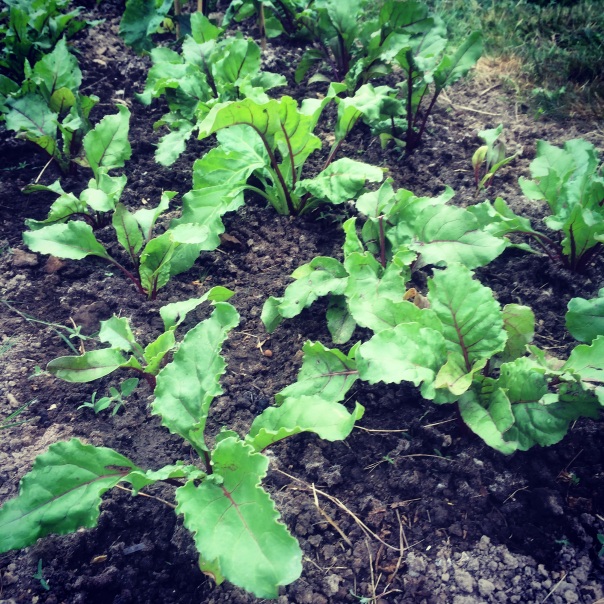




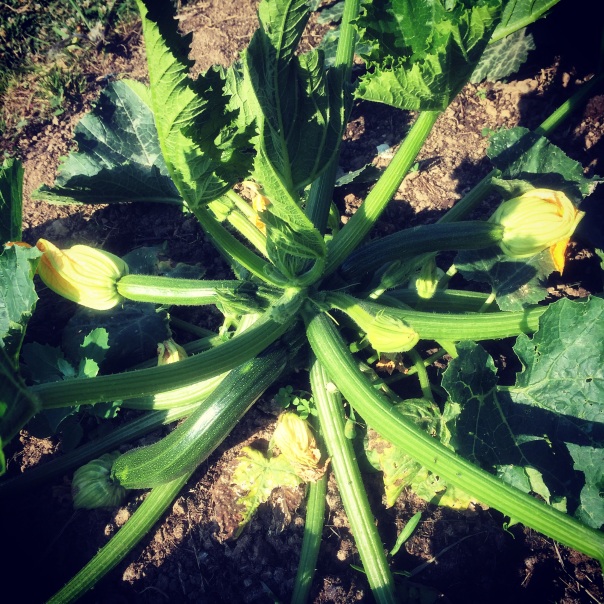



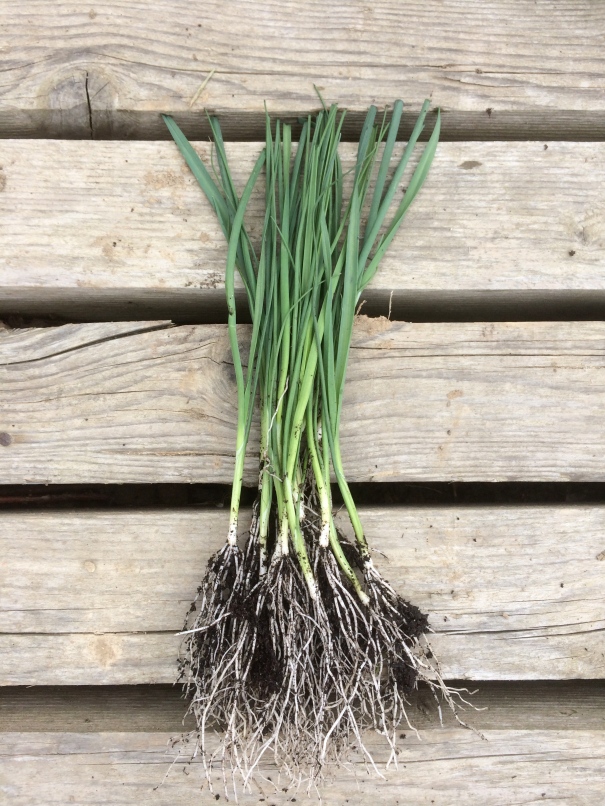
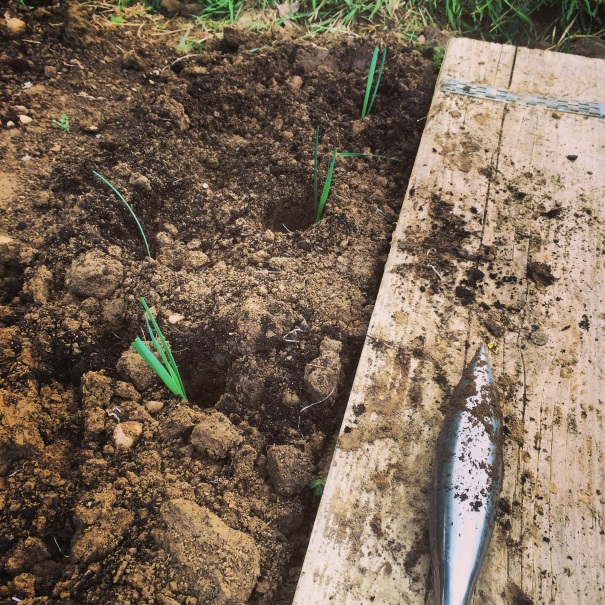





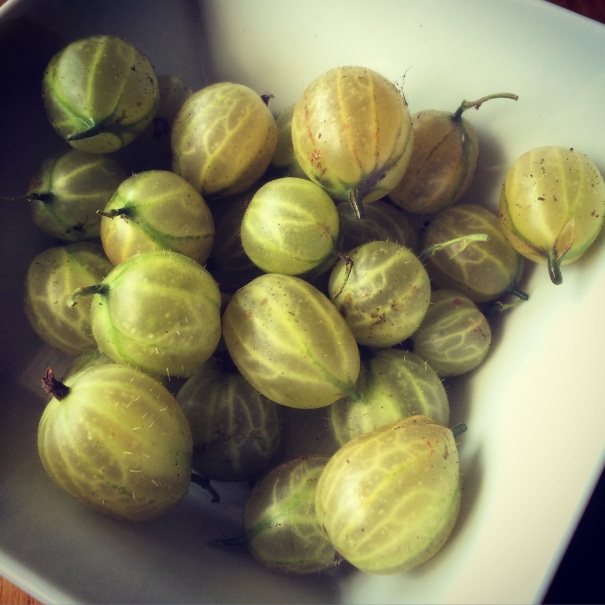










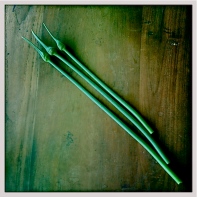






Leave a comment